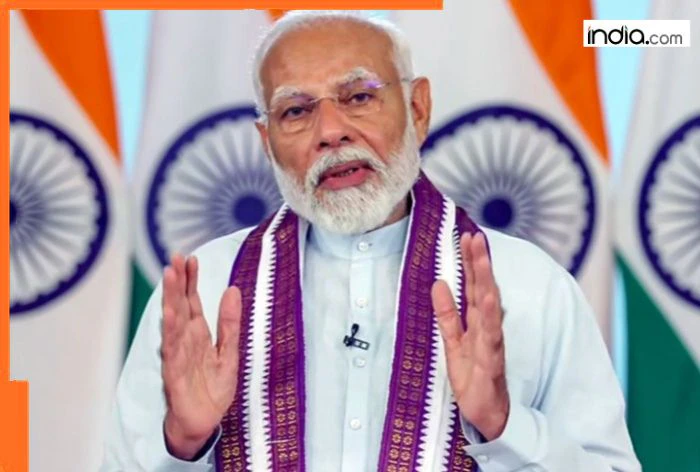Copyright latestly

Mumbai, November 1: Every year on this day, November 1, India celebrates the Formation Day of eight states, such as Andhra Pradesh, Chhattisgarh, Haryana, Karnataka, Kerala, Madhya Pradesh, Punjab, and Tamil Nadu. The day marks a significant chapter in India’s post-Independence history when linguistic and administrative reorganisation reshaped the country’s political map. These states, created at different times, represent the nation’s diversity, unity, and evolving federal structure. Their formation was driven by linguistic identity, cultural preservation, and developmental aspirations unique to each region. From the Telugu-speaking regions of Andhra Pradesh to the Dravidian roots of Tamil Nadu, each of these states carries a unique story of struggle, reformation, and cultural evolution. While some states like Andhra Pradesh and Kerala were formed through linguistic reorganisation in 1956, others, such as Chhattisgarh and Haryana, emerged later to ensure balanced governance and regional development. As the country celebrates their rich history, let’s know how each of these eight states came into existence and what led to their formation. Punjab Formation Day 2025 Date, History, Significance: Key Things To Know Including How To Celebrate Punjab Day. How Was Andhra Pradesh Formed? Andhra Pradesh holds the distinction of being the first state in India formed on a linguistic basis. The demand for a separate state for Telugu-speaking people gained momentum in the early 1950s, led by the sacrifice of Potti Sriramulu, who undertook a fast-unto-death demanding a distinct Telugu state. His death in 1952 sparked massive protests, compelling the Indian government to create Andhra State on October 1, 1953, by separating the Telugu-speaking areas from the Madras Presidency. Later, on November 1, 1956, the Andhra State was merged with the Telugu-speaking regions of the erstwhile Hyderabad State to form Andhra Pradesh under the States Reorganisation Act, 1956. This reorganisation fulfilled the long-standing aspirations of the Telugu population for self-governance and linguistic unity. How Was Chhattisgarh Formed? Carved out of Madhya Pradesh on November 1, 2000, Chhattisgarh was formed to promote equitable development in a region that had long faced administrative neglect and economic disparities. The demand for a separate state had been active since the 1950s, gaining traction over decades as the region’s tribal population and resource-rich landscape remained underdeveloped. Comprising 16 districts of southeastern Madhya Pradesh, Chhattisgarh became India’s 26th state, with Raipur as its capital. The decision aimed to provide better governance, preserve local culture, and ensure the optimal use of natural resources. Karnataka Rajyotsava 2025 Date, History, Significance: When Is Karnataka Formation Day? Here’s Everything You Need To Know About the Karnataka Day. How Was Haryana Formed? Haryana was established on November 1, 1966, after being carved out of Punjab on linguistic lines to create a separate Hindi-speaking state. The movement for Haryana’s formation began in the 1950s, inspired by the demand for states based on linguistic and cultural homogeneity. The Punjabi Suba movement in Punjab and the subsequent need to separate Hindi and Punjabi-speaking regions led to the establishment of the Shah Commission, which recommended the division. Chandigarh was made a shared capital between Haryana and Punjab. Haryana’s creation marked an important phase in India’s state reorganisation, ensuring better administrative efficiency and political representation for its population. How Was Karnataka Formed? Originally known as Mysore State, Karnataka came into existence on November 1, 1956, uniting all Kannada-speaking regions under one administration as part of the States Reorganisation Act. Before unification, Kannada-speaking areas were scattered across different presidencies and princely states, including Bombay, Hyderabad, and Madras. The movement for "Ekikarana" or unification had been a long-standing aspiration among Kannada speakers who wanted cultural and linguistic unity. In 1973, Mysore State was officially renamed Karnataka, reflecting the state’s historical and linguistic identity. Today, Karnataka stands as a dynamic blend of tradition and modernity, home to the IT capital Bengaluru. How Was Kerala Formed? Kerala was formed on November 1, 1956, through the merger of the Malayalam-speaking regions of Travancore-Cochin and the Malabar district from the Madras Presidency. The creation of the state was a direct outcome of the linguistic reorganisation of Indian states, following the recommendations of the States Reorganisation Commission. The movement for a unified Malayalam-speaking state, known as the Aikya Kerala Movement, had gathered pace in the years after Independence, reflecting the people’s desire for linguistic and cultural unity. With its formation, Kerala emerged as a distinct entity known for its high literacy rates, progressive social indicators, and cultural richness. The day is celebrated annually as Kerala Piravi, marking the state’s birth and its journey toward becoming "God’s Own Country." How Was Madhya Pradesh Formed? Madhya Pradesh, meaning "Central Province," was formed on November 1, 1956, as part of the States Reorganisation Act, bringing together the states of Madhya Bharat, Vindhya Pradesh, and Bhopal. The reorganisation aimed to create a larger, linguistically homogeneous Hindi-speaking state at the heart of India. The state underwent a major territorial change again on November 1, 2000, when its southeastern region was carved out to form Chhattisgarh. Known as the "Heart of India," Madhya Pradesh boasts a rich historical and cultural legacy, being home to ancient cities, monuments, and UNESCO World Heritage sites. How Was Punjab Formed? Punjab was reorganised on November 1, 1966, following the Punjabi Suba movement, which demanded a separate state for Punjabi-speaking people. The movement, led primarily by the Akali Dal, sought linguistic and cultural recognition for the Sikh-majority Punjabi-speaking population. The Indian government established the Shah Commission to address the demand, leading to the bifurcation of Punjab into Punjab and Haryana, with parts of Himachal Pradesh also separated. Chandigarh was designated as the shared capital of both Punjab and Haryana. The reorganisation aimed to ensure administrative efficiency and linguistic balance while preserving Punjab’s cultural identity. How Was Tamil Nadu Formed? Tamil Nadu, known for its rich cultural heritage and ancient Dravidian roots, was originally part of the Madras Presidency under British rule. After Independence, it became Madras State in 1950 and later witnessed strong movements advocating for the recognition and preservation of the Tamil language and culture. The state was officially renamed Tamil Nadu, meaning "Land of the Tamils," on January 14, 1969, during the tenure of Chief Minister CN Annadurai. The renaming reflected the region’s linguistic pride and cultural identity. Tamil Nadu’s formation and renaming were key milestones in the larger linguistic reorganisation of Indian states. The formation of these eight states on November 1 stands as a defining moment in India’s history, symbolising the nation’s commitment to linguistic, cultural, and administrative harmony. Each state’s journey reflects the struggles, aspirations, and achievements of its people in shaping a distinct identity within the Indian Union. As they celebrate their Formation Day today, they continue to honour their roots while driving the nation’s progress forward.



